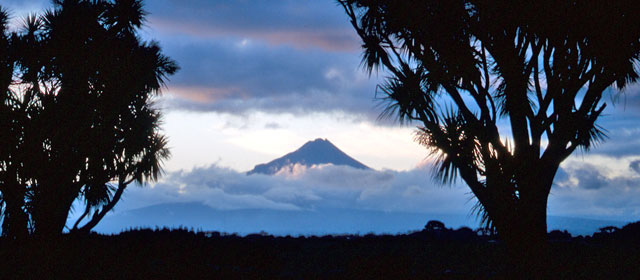Story summary
Origins and lands
The Ngāti Ruanui ancestor Turi fled the island of Rangiātea to save his life. In a canoe laden with plants and animals, Turi and his people sailed across the Pacific. After many tribulations they arrived in New Zealand. They established their tribal area in south Taranaki, between the Whenuakura River and the Ōeo Stream, where they lived for many generations.
Intertribal wars
Ngāti Ruanui were invaded by neighbouring tribes during the early 1800s. Muskets wreaked havoc, and many members of Ngāti Ruanui lost their lives or were taken as slaves.
To bring peace, the Ngāti Hao chief Patuone arranged marriages between Ngāti Ruanui and people of his tribe. But restful times were short-lived and intertribal war did not stop until the 1830s. By this time Ngāti Ruanui had suffered serious losses of people, and many were driven from their land.
Conflict over land
Ngāti Ruanui were quick to recover, adapting readily to European agriculture and education. But they were also wary of European influences, preferring to run their own schools for political reasons.
However, the wars of the 1860s saw Ngāti Ruanui disadvantaged again. They joined forces with Te Āti Awa to fight against the British Crown and protect their land. The military leader Tītokowaru played an important role in the conflict. In 1868 he attacked an outpost and later successfully defended his pā, Te Ngutu-o-te-manu. But the government eventually gained control of south Taranaki.
Ngāti Ruanui today
These days Ngāti Ruanui live all over New Zealand, and the world. Their recent success in winning compensation for the land taken from them in the 1860s means that funds and resources have been channelled back into the tribe for the benefit of all its members. More than 7,000 people claimed affiliation with Ngāti Ruanui in the 2013 census; most lived outside Taranaki.





